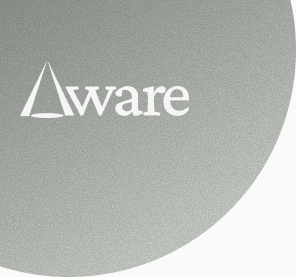The 1-Minute Brief
What: Executive Order 14149, "Restoring Freedom of Speech and Ending Federal Censorship," prohibits federal agencies and employees from using government resources to unconstitutionally limit the protected free speech of Americans, particularly on social media platforms. It also mandates an investigation into past government activities related to online content moderation.
Money: The order does not appropriate new funds. It restricts the use of existing taxpayer resources for any activities deemed to be unconstitutional censorship. The financial impact will depend on the scope of the Attorney General's investigation and any subsequent actions.
Your Impact: The order could limit the federal government's practice of flagging what it considers misinformation to social media companies. This may result in seeing a wider range of views on your social media feeds, but potentially also more content that government agencies would deem false or harmful.
Status: Issued by the President on January 20, 2025, and published in the Federal Register on January 28, 2025. The order is currently in effect.
What's Actually in the Bill
This executive order establishes a formal policy to prevent federal government interference with constitutionally protected speech. It responds to allegations that the previous administration pressured social media companies to suppress certain viewpoints under the banner of combating "misinformation," "disinformation," and "malinformation."
Core Provisions:
- Prohibits any federal department, agency, officer, or employee from using federal resources to engage in or facilitate any conduct that would unconstitutionally abridge free speech.
- Directs the Attorney General, in consultation with other agency heads, to investigate federal government activities over the past 4 years that may have been inconsistent with this policy.
- Requires the Attorney General to produce a report for the President with recommendations for remedial actions based on the investigation's findings.
Stated Purpose (from the Sponsors):
The order explicitly states its purpose is to protect the First Amendment rights of Americans to speak freely without government interference. It aims to:
- Secure the right of the American people to engage in constitutionally protected speech.
- Ensure no federal official or agent engages in conduct that unconstitutionally abridges free speech.
- Prevent taxpayer resources from being used for such activities.
- Identify and correct past misconduct by the federal government related to the censorship of protected speech.
Key Facts:
Affected Sectors: Technology (specifically social media companies), Federal Government Agencies (e.g., Department of Justice, Department of Homeland Security, FBI, CDC).
Timeline: The order took effect on January 20, 2025. The Attorney General's investigation is mandated to look back over the preceding four years.
Scope: The order applies to all executive departments and agencies of the U.S. Federal Government.
The Backstory: How We Got Here
Timeline of Events:
The Rise of "Jawboning" (2020-2024):
During the COVID-19 pandemic and the 2020 election season, federal officials, including those from the White House, FBI, and CDC, began communicating extensively with social media platforms about content they considered to be misinformation. These communications ranged from flagging specific posts and trends to public and private calls for platforms to strengthen their content moderation policies. This practice, often called "jawboning," led to accusations that the government was coercing private companies to censor speech it disliked, covering topics from vaccine efficacy to election integrity.
Missouri v. Biden / Murthy v. Missouri (2022-2024):
In May 2022, the states of Missouri and Louisiana, along with several individuals, sued the Biden administration, alleging that this "jawboning" amounted to a "sprawling federal 'Censorship Enterprise'" that violated the First Amendment. A federal district court and the 5th U.S. Circuit Court of Appeals largely sided with the plaintiffs, issuing a broad injunction to limit such communications between government officials and tech companies.
The case, eventually renamed Murthy v. Missouri, reached the Supreme Court. On June 26, 2024, the Court ruled 6-3 against the plaintiffs, but on procedural grounds. The majority opinion, authored by Justice Amy Coney Barrett, concluded that the states and individuals lacked the legal standing to sue because they couldn't draw a direct, concrete link between a specific government action and the removal of their specific posts. The Court did not rule on the core constitutional question of whether the government's actions were illegal coercion.
Why Now? The Political Calculus:
- Direct Response to Murthy v. Missouri: The Supreme Court's decision to dismiss the case on standing left the central issue unresolved. This executive order serves as a way for the new administration to address the underlying claims of the lawsuit through executive action, bypassing the need for a court ruling.
- Fulfilling a Campaign Promise: The order aligns with a "Free Speech Policy Initiative" released during the 2022 campaign, which pledged to ban federal agencies from colluding with companies to censor lawful speech and to fire federal employees involved in such activities.
- Perception of Bias: There is a widespread belief among Republicans that social media platforms are biased against conservative viewpoints. This order is a direct and visible action taken to counter that perceived bias.
Your Real-World Impact
The Direct Answer: This directly affects how the federal government interacts with the social media platforms you use daily, which could change the information you see and engage with online.
What Could Change for You:
Potential Benefits:
- Less Filtered Feeds: You may see a broader range of political viewpoints and controversial topics on social media, as platforms may feel less pressure to remove content flagged by the government.
- Greater Transparency: The mandated Attorney General's report could shed light on the extent of past government involvement in content moderation, providing more transparency about these previously hidden practices.
- Protection of Speech: The order provides a clear directive intended to protect individuals' speech from being suppressed due to government pressure on tech companies.
Possible Disruptions or Costs:
Short-term (Next 1-2 Years):
- Increase in Misinformation: Without government agencies actively flagging what they identify as false or harmful content related to public health, election security, or national security, such content may spread more widely.
- Platform Uncertainty: Social media companies may become more hesitant to cooperate with the government on any content-related issues, even those concerning criminal activity or foreign influence campaigns, for fear of being accused of censorship.
Long-term:
- Erosion of Trust: A more hands-off approach could lead to an increase in disinformation, potentially eroding public trust in democratic institutions and the media.
- Voluntary Moderation Changes: Platforms may continue to moderate content based on their own policies, independent of government input, meaning the changes you see might be minimal if the platforms' goals align with past government requests.
Who's Most Affected:
Primary Groups: Social media users who post content on controversial political, social, and scientific topics; social media companies; and federal agencies that monitor online information.
Secondary Groups: Journalists, academic researchers, and public health officials who rely on accurate information dissemination.
Regional Impact: No specific regional impact; the order's effects are nationwide.
Bottom Line: This executive order aims to stop the government from pressuring social media companies to censor you, which could lead to more open but potentially less reliable information on your feeds.
Where the Parties Stand
Republican Position: "End the Collusion, Protect Free Speech"
Core Stance: The federal government should not pressure private tech companies to censor legal speech, especially conservative viewpoints.
Their Arguments:
- ✓ The previous administration engaged in a "censorship enterprise" that unconstitutionally silenced Americans.
- ✓ Social media companies have a documented history of bias against conservatives and flagging their content unfairly.
- ✗ The government labeling speech as "misinformation" is often a pretext to suppress disfavored political narratives.
Legislative Strategy: Supporting the executive order's investigation and using congressional oversight to further probe past administration actions and the content moderation policies of tech companies.
Democratic Position: "Protecting Democracy from Disinformation"
Core Stance: The government has a responsibility to counter dangerous misinformation that threatens public health and election integrity.
Their Arguments:
- ✓ Government agencies should be able to communicate with social media platforms to warn them about foreign influence campaigns and threats to national security.
- ✓ Unchecked online disinformation poses a significant threat to democratic processes and public safety.
- ⚠️ While direct censorship is wrong, simply flagging harmful content for private companies to review under their own policies is a necessary function of government.
Legislative Strategy: Advocating for legislative solutions that increase platform transparency and hold companies accountable for the spread of harmful content, potentially through reforms to Section 230 of the Communications Decency Act.
Constitutional Check
The Verdict: ✓ Constitutional
Basis of Authority:
The order is issued under the authority vested in the President by the Constitution and Section 301 of Title 3 of the U.S. Code. This statute grants the President the authority to delegate functions vested in the presidency to the heads of executive departments. The President has inherent authority as the head of the Executive Branch to direct the actions of federal agencies and employees.
3 U.S.C. § 301: "The President of the United States is authorized to designate and empower the head of any department or agency in the executive branch... to perform... any function which is vested in the President by law..."
Constitutional Implications:
[Executive Power]: The order is a valid exercise of the President's power to oversee the executive branch and ensure its employees operate within constitutional bounds, specifically the First Amendment. It directs federal employees on how to conduct their duties.
[Precedent]: The Supreme Court's ruling in Murthy v. Missouri did not set a precedent on the legality of government "jawboning," as the case was dismissed on standing. However, the underlying principle that government cannot coerce private actors to achieve unconstitutional ends is well-established, as seen in cases like Bantam Books, Inc. v. Sullivan.
[Federalism]: This executive order does not overstep into powers reserved for the states; it strictly governs the conduct of the federal executive branch.
Potential Legal Challenges:
The order itself is unlikely to face significant legal challenges, as it directs the government to comply with the Constitution rather than restricting private action. The primary legal and political battles will likely arise from the findings of the Attorney General's investigation and any subsequent actions taken against former officials or current employees.
Your Action Options
TO SUPPORT THIS EXECUTIVE ORDER
5-Minute Actions:
- Call Your Rep/Senators: Capitol Switchboard: (202) 224-3121. "I'm a constituent from [Your City/Town] and I support Executive Order 14149. I urge [Rep./Sen. Name] to use their oversight role to ensure the administration's investigation into federal censorship is thorough and transparent."
30-Minute Deep Dive:
- Write a Detailed Email: Contact members of the House Oversight Committee and the Senate Judiciary Committee to encourage robust hearings based on the Attorney General's forthcoming report.
- Join an Organization: Groups like the Foundation for Individual Rights and Expression (FIRE) and the American Civil Liberties Union (ACLU) often work on issues of government speech and censorship.
TO OPPOSE THIS EXECUTIVE ORDER
5-Minute Actions:
- Call Your Rep/Senators: Capitol Switchboard: (202) 224-3121. "I'm a constituent from [Your City/Town] and I have concerns about Executive Order 14149. I urge [Rep./Sen. Name] to ensure the government can still work with tech companies to combat dangerous disinformation and threats to national security."
30-Minute Deep Dive:
- Write a Letter to the Editor: Submit a letter to your local newspaper arguing that the order may hinder necessary government efforts to protect the public from harmful online disinformation.
- Join an Organization: Advocacy groups like the Brennan Center for Justice and Common Cause focus on fighting disinformation and protecting democratic institutions.

